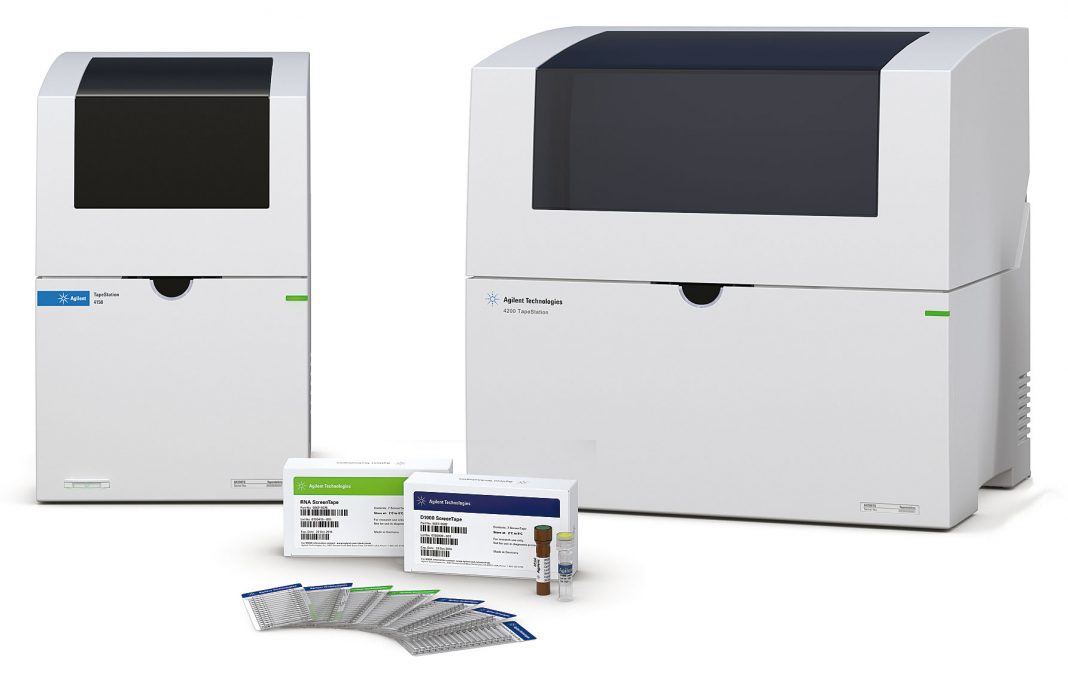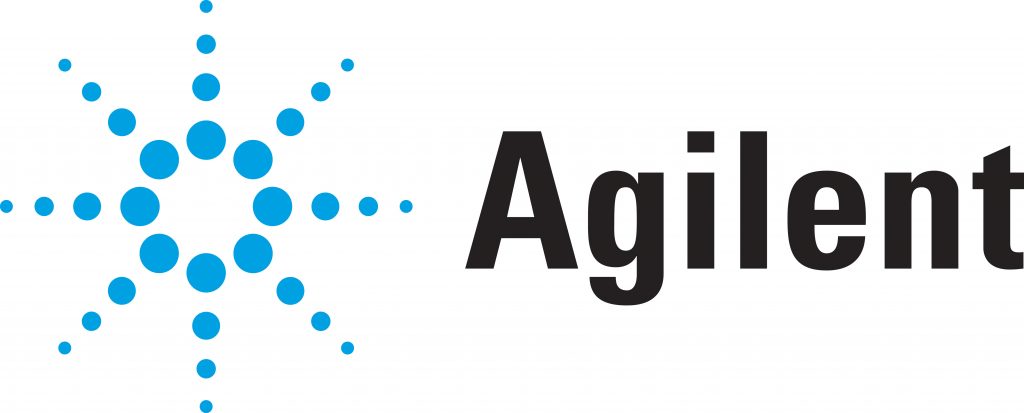Sponsored by
Mathieson et al. recently published a paper in Biopreservation and Biobanking entitled “Extracting DNA from FFPE Tissue Biospecimens Using User-Friendly Automated Technology: Is There an Impact on Yield or Quality?”(published by Mary Ann Liebert, Inc.). Co-author William “Bill” Mathieson, Ph.D., is a scientist at the Integrated BioBank of Luxembourg (IBBL). Rainer Nitsche, Ph.D., is a product manager at Agilent. GEN recently interviewed both of these people about the various issues and factors impacting biobanking operations and instrumentation, including the
Agilent TapeStation systems.
GEN: Can you briefly summarize your latest article in the Biopreservation and Biobanking journal?
Dr. Mathieson: This was a collaborative study between the Imperial College London Tissue Bank and IBBL. What we were focusing on is a concern that is prevalent when performing extractions of DNA from formalin-fixed, paraffin-embedded (FFPE) tissue blocks, in that far too often the DNA yield or its quality are insufficient for downstream sequencing. We wanted to know whether this was partially a consequence of extracting DNA manually rather than adopting automated technology.
Using the same clinical FFPE tissue blocks, we compared a manual method of extracting DNA (performed by trained technicians familiar with DNA extractions) with two automated systems. We assessed quality using qPCR and the TapeStation instrument (the latter returning DINs). We established that neither yield nor quality of DNA from manual extractions was poorer than when the DNA had been extracted using the automated systems. In fact, we found slightly improved results using the manual method. Thus, whilst automated equipment is crucial for labs with high throughput, for labs that are not in that position, we see no inherent reason why they need to invest in automation, provided their technicians are properly trained.
GEN: It’s a bit surprising that the automated extraction of DNA returns poorer DNA in terms of quantity and integrity than the manual extraction. What are the reasons?
Dr. Mathieson: Although that is what we found, it is important to say that we tested only two semi-automated methods and one manual method. So, I do not want to make the assumption that all automated systems are poorer than all manual methods. Also, one of the automated methods had a unique deparaffinization protocol and a shorter proteinase K digest than the manual method, and these factors will influence the results to some extent. But when manual extractions are performed by a trained technician, the technician can see what they are doing at each step, be proactive, and react when something has not proceeded optimally.
Also, equipment like benchtop centrifuges used in manual methods can be more efficient (centrifuging faster) than those incorporated into automated extraction robots. So, to repeat: I do not want to draw the conclusion that manual is inherently better than automated extractions, but I see no evidence that manual is inherently worse, either.
GEN: What are the challenges in working with FFPE material?
Dr. Mathieson: From a molecular biology point of view, the challenges arise because the DNA, RNA, and protein are crosslinked together by formaldehyde moieties. That means that when you extract from FFPE, you need to reverse those crosslinks, and then you get degraded DNA, RNA, and protein. FFPE is, however, excellent for the preservation of morphological detail, performing much better than cryopreservation. We do not want to lose sight of that. So, I do not want to give the impression that FFPE is “bad,” because it is not. Histological staining and the immunohistochemistry protocols used for clinical diagnosis are optimized for and depend on FFPE. There are many other reasons why FFPE is good. However, for molecular biologists, the fundamental problem is the degraded nature of the DNA, RNA, and the protein that you extract from FFPE samples.
GEN: From a biobank’s perspective, what is the importance of sample quality control?
Dr. Mathieson: It is absolutely crucial. For example, if a researcher is going to compare two cohorts of samples, for example, patients with cancer versus those without, downstream analyses will be needed. They could involve proteomics, qPCR, digital PCR, or sequencing; the technique does not matter.
Whatever the method, it is important that measures of sample quality in those two groups are comparable, because the downstream results will depend on the quality of the input samples. If the quality of the samples is variable, that will drive variation in the downstream results, and mask or bias the biological differences between the patients, which is the point of the study. So you can get false results, or fail to see a genuine result that is subtle in its magnitude. The only way to address that is to be aware of what the quality of each sample is, then you can normalize that between your samples or exclude samples that fall outside of your selection criteria.
GEN: Do you have the impression that quality control is becoming more and more a topic for biobanks? Do you see a general trend?
Dr. Mathieson: Yes, I see more and more interest in quality control among biobanks, which is excellent news. There is also a greater understanding of the importance of quality control amongst researchers. We agree that it is important, and we can see why it is important.
The problem is that many biobanks, particularly those working within a clinical setting, cannot control the preanalytics of the biospecimens they collect because they get them from the pathology lab. Also, many biobanks do not have the resources to create a laboratory that has all the equipment that is needed to perform the quality control work. In these situations, the problem can be addressed to some extent simply by recording what the preanalytical variables (fixation time, ischemia, etc.) are for each biospecimen using the SPREC code or the BRISQ code. However, often these preanalytical parameters are not recorded in the clinical workflow, and consequently, there are a lot of biospecimens in storage for which the quality remains unknown, and quality control assays cannot be routinely performed at the biobank, just because of a lack of resources.
GEN: From an instrument manufacturer point of view, are there any specific market needs for biobanks?
Dr. Nitsche: Yes, of course. As we heard from Bill, there are quite some challenges for biobanks regarding the varying quality of samples. The quality depends on the preanalytics (for example, how the sample was collected, and how it was transported, as well as storage conditions). There are many factors influencing the quality.
Customer interviews have shown us that there is a growing need for sample quality control. Standardization, specifically of RNA and DNA sample quality control, is a major topic. Our 4200 TapeStation platform provides the quality RNA integrity number equivalent (RINe) to determine the RNA sample integrity, the DNA integrity number (DIN) for genomic DNA, as well as the DV200 value for FFPE RNA samples. Biobanks need to work with varying numbers of samples that depend on the size of projects. When larger numbers of samples are handled, automation becomes key. Having predictable analysis costs, which means constant costs per sample, is also important for biobanks. In addition, they are looking for an easy-to-use system, one that can address most of their quality control needs for DNA and RNA samples.
GEN: Can you tell us more about the DIN? How is it calculated, and what are the customer benefits? Are you aware of customers who established DIN thresholds?
Dr. Nitsche: The DNA integrity number is a software algorithm Agilent developed and implemented into the Agilent 4200 TapeStation analysis software. It allows a numerical assessment of the DNA integrity. It is calculated out of the size distribution of the DNA smear. The DIN is between 1 and 10, which means the higher that value, the more intact the sample is. And the lower, the more degraded the sample is.
One benefit of analyzing isolated genomic DNA with a DIN is that it is easy to interpret the results. It is independent of the user who does the analysis as well as independent of the concentration. It allows objective comparison of different samples with each other and thus ensures the reproducibility of downstream experiments (such as next-generation sequencing, NGS). Users can define quality thresholds to either stop or continue with the workflow.
In collaboration with a big NGS (next-generation sequencing) core facility, we published a dedicated application note. They ran a large study with gDNA extracted from FFPE material. The customers have been able to correlate key NGS quality control parameters (for example, on-target rate and coverage at 10X) with the quality of the input material. As a result, they implemented a DIN threshold of 3 and sorted out any sample that showed a lower value. Avoiding a lengthy and expensive NGS analysis with these low-quality samples means significant cost savings for them.
GEN: Would you give us a brief outlook on what Agilent is planning for the near future? For example, will it enlarge the TapeStation portfolio?
Dr. Nitsche: Agilent always wants to better address our customers’ needs, and we continuously develop new applications and novel instrumentation. By the end of the year, we are launching a dedicated ScreenTape assay for the analysis of cell-free DNA (cfDNA).
Depending on the preanalytical treatment, cfDNA samples might contain high-molecular-weight DNA, which can interfere in downstream experiments. The 4200 TapeStation analysis software automatically calculates the concentration as well as sample qualification with percentage of cfDNA of the cfDNA samples.
On the hardware side, we are launching a new low-throughput instrument, the Agilent 4150 TapeStation system, which will complement our existing TapeStation product portfolio. The system allows the analysis of up to 16 samples in one run. The 4150 TapeStation instrument will be an entry-level system that offers all the advantages of ScreenTape technology to customers with a low-throughput need, so it’s an ideal RNA and DNA quality control tool for smaller biobanks. It offers straightforward operation with minimum hands-on time, ready-to-use consumables, and fast analysis time, all in a reliable, reproducible manner for the full range of DNA and RNA applications.
Agilent Technologies Inc. (NYSE: A) is a global leader in life sciences, diagnostics, and applied chemical markets. With more than 50 years of insight and innovation, Agilent instruments, software, services, solutions, and people provide trusted answers to customers’ most challenging questions. The company generated revenues of $4.47 billion in fiscal 2017 and employs 14,500 people worldwide.
Agilent developed the 4200 TapeStation system, offering automated sample processing that enables scientists in next-generation sequencing labs, including those in biobanks, to analyze up to 96 DNA samples at a time.








